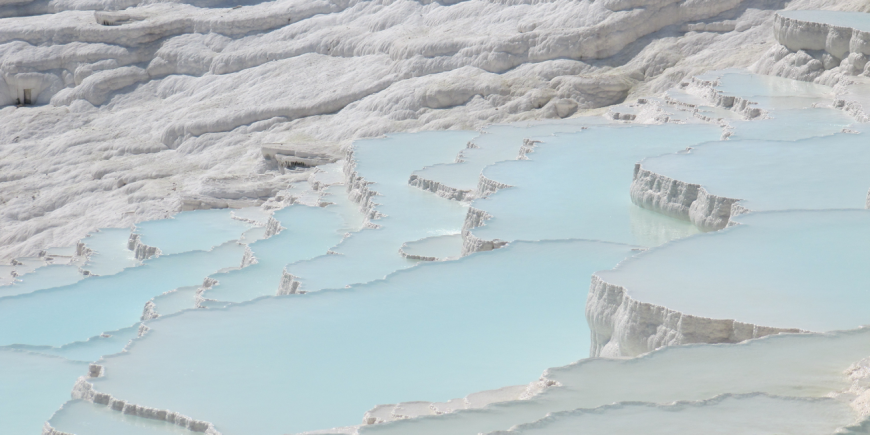The surreal, brilliant white travertine terraces and warm, limpid pools of Pamukkale hang, like the petrified cascade of a mighty waterfall, from the rim of a steep valley side in Turkey’s picturesque southwest. Truly spectacular in its own right, the geological phenomenon that is Pamukkale, literally “Cotton Castle” in Turkish, is also the site of the remarkably well-preserved ruins of the Greek-Roman city of Hierapolis. With such a unique combination of natural and man-made wonders it’s little wonder that Pamukkale-Hierapolis has been made a Unesco World Heritage site. With over two million visitors annually, it is also Turkey’s single most visited attraction.
There are dramatic travertine terraces dotted all around the globe, from China to Iran, the USA to Afghanistan. But nowhere else in the world can visitors enjoy exploring both picturesque travertine formations, built up over the millennia from limestone deposited by the abundant hot springs, and the colonnaded streets, temples, bath houses, necropolis and theatre of the remains of an idyllically located Greek-Roman spa city, Hierapolis. You can even bathe, as the Romans once did, in a picturesque pool filled with warm (around 36C), mineral rich waters and swim amongst submerged columns of great antiquity.






